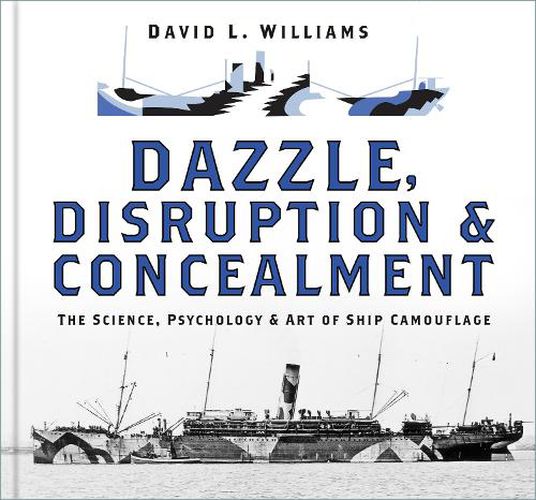Readings Newsletter
Become a Readings Member to make your shopping experience even easier.
Sign in or sign up for free!
You’re not far away from qualifying for FREE standard shipping within Australia
You’ve qualified for FREE standard shipping within Australia
The cart is loading…






Many people are familiar with the term ‘dazzle design’, even perhaps as it was applied to ships during wartime. But what of its origins and objectives as a defensive practice at sea?
Moreover, was it the only approach to the painted protection of merchant and naval vessels during the two world wars?
Presented here are the origins of maritime camouflage, drawing on early influences of natural concealment as seen in living creatures and plants, followed by the emergence of two fundamentally-opposed schools of thought
reduced visibility, or disruption to visual perception. The book explores the schemes themselves, and the objectives and effectiveness of the various strategies advocated as forms of painted protection by looking at the scientific and artistic principles involved (the behaviour of light and the process of vision), as well as the individuals engaged in maritime camouflage development and the institutions set up to conduct in-depth research into these practices.
AUTHOR: David L. William’s background is in professional industrial photography and technical publications. He was previously responsible for the entire aircraft and hovercraft in-service support operation of Westland Aerospace. He has written over 30 books on shipping and related subjects, including Great Passenger Ships that Never Were, Made on the Isle of Wight and Cabin Class Rivals for The History Press. 38 colour, 213 b/w illustrations
$9.00 standard shipping within Australia
FREE standard shipping within Australia for orders over $100.00
Express & International shipping calculated at checkout
Many people are familiar with the term ‘dazzle design’, even perhaps as it was applied to ships during wartime. But what of its origins and objectives as a defensive practice at sea?
Moreover, was it the only approach to the painted protection of merchant and naval vessels during the two world wars?
Presented here are the origins of maritime camouflage, drawing on early influences of natural concealment as seen in living creatures and plants, followed by the emergence of two fundamentally-opposed schools of thought
reduced visibility, or disruption to visual perception. The book explores the schemes themselves, and the objectives and effectiveness of the various strategies advocated as forms of painted protection by looking at the scientific and artistic principles involved (the behaviour of light and the process of vision), as well as the individuals engaged in maritime camouflage development and the institutions set up to conduct in-depth research into these practices.
AUTHOR: David L. William’s background is in professional industrial photography and technical publications. He was previously responsible for the entire aircraft and hovercraft in-service support operation of Westland Aerospace. He has written over 30 books on shipping and related subjects, including Great Passenger Ships that Never Were, Made on the Isle of Wight and Cabin Class Rivals for The History Press. 38 colour, 213 b/w illustrations